My favourite painting: Ross Murray
'I admire the adventure, the sense of companionship and the purpose of dogs'
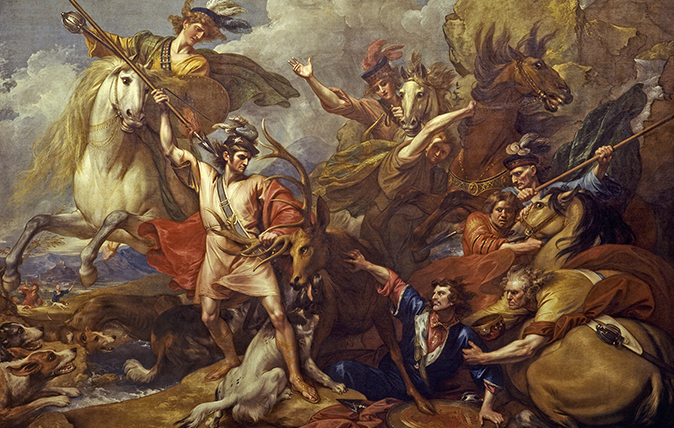

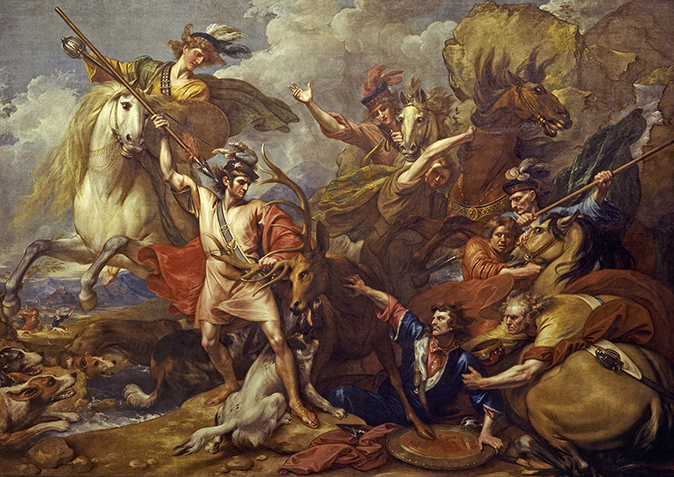
Alexander III of Scotland Saved from the Fury of a Stag by Colin Fitzgerald, 1786, by Benjamin West PRA (1738–1820), 144in by 205¼in, National Gallery of Scotland, Edinburgh
Ross Murray says: As an impressionable young student in Edinburgh, daily visits to the Scottish National Gallery drew me to this magnificent homage to heroism. For me, Benjamin West captures all the romanticism of the King’s Rescue, the adrenaline in this moment of intense danger and the sheer physicality when men were real men. I admire the adventure, the sense of companionship and the purpose of dogs. And they all wore stylish hats in those halcyon days! Cuidich ’n Righ (Gaelic for Help the King) became the motto of my regiment, The Queen’s Own Highlanders, after this epic legend.
Ross Murray is the outgoing President of the CLA
John McEwen comments on Alexander III of Scotland Saved from the Fury of a Stag:
This is one of the first monumental history paintings of a Scottish subject. In mythological terms, it shows the legendary story of the origin of Clan Mackenzie, when Colin Fitzgerald, an Irish exile who found refuge at the Scottish Court, saved the King from being savaged while out hunting deer near Kincardine. In gratitude, the King granted Fitzgerald the lands of Kintail in Ross. Fitzgerald proceeded to found Clan Mackenzie, whose emblem remains a bleeding stag head.
The picture was commissioned by the 1st Lord Seaforth and Baron Mackenzie of Kintail. West, who, in 1792, was appointed President of the Royal Academy by George III on the death of its founder Sir Joshua Reynolds, later bought back the picture. The King praised Alexander’s grounded horse for its accuracy, possibly West’s debt to Stubbs’s recent publication on horse anatomy.
West, born in the Quaker village of Springfield, Pennsylvania, was ‘so devoted to drawing while a Child and a Youth, that every other part of his education was neglected’. It showed later in his mistake-ridden written English. In 1760, he left America for Italy, promising his fiancée a speedy return. Such was his novelty that a blind Italian cardinal assumed he was a Red Indian.
Sign up for the Country Life Newsletter
Exquisite houses, the beauty of Nature, and how to get the most from your life, straight to your inbox.
He made a useful English contact in Italy, George III’s librarian, and, at 24, came to England: ‘I am at last arrived at the mother country, which we Americans are all so desirous to see.’ His fiancée joined him and he never left. Categorised ‘American’, he was proud to be born a British subject and remained a loyalist after American independence.
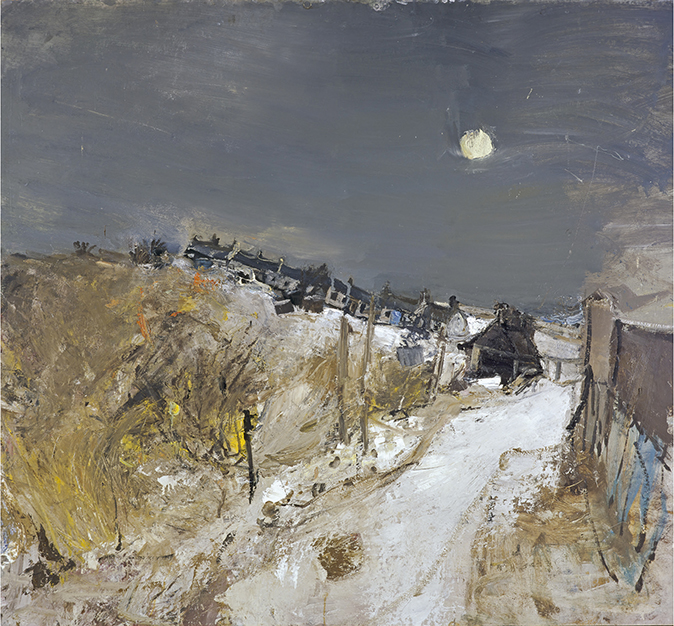
My favourite painting: James Naughtie
'The word that comes to my mind is always humanity, even when there isn’t a person to be seen in
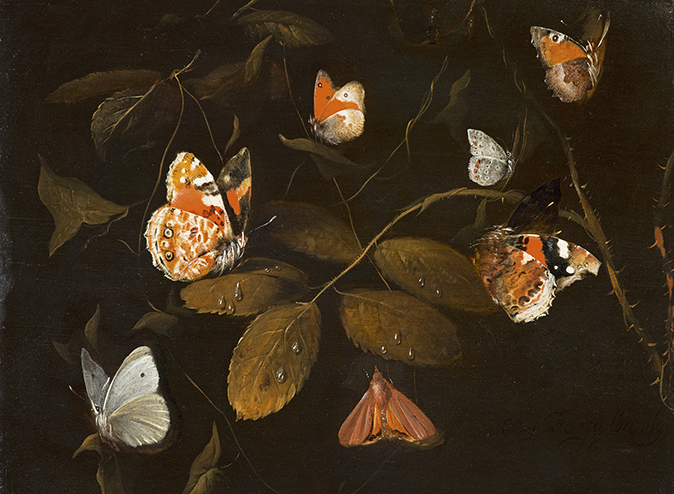
Credit: Scottish National Gallery
My favourite painting: Merryn Somerset Webb
'It still represents for me the small moments of calm in an otherwise completely chaotic time'
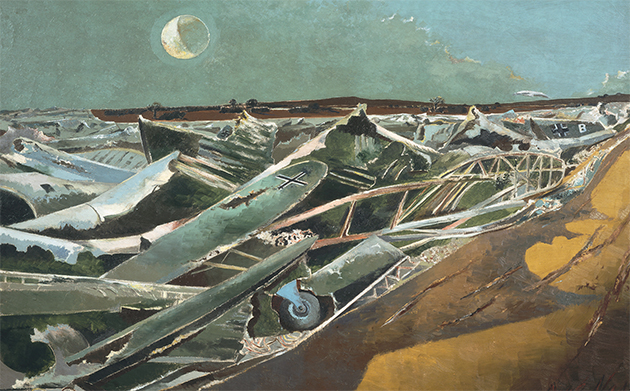
My favourite painting: Robert Macfarlane
Robert Macfarlane chooses his favourite painting for Country Life.
Country Life is unlike any other magazine: the only glossy weekly on the newsstand and the only magazine that has been guest-edited by HRH The King not once, but twice. It is a celebration of modern rural life and all its diverse joys and pleasures — that was first published in Queen Victoria's Diamond Jubilee year. Our eclectic mixture of witty and informative content — from the most up-to-date property news and commentary and a coveted glimpse inside some of the UK's best houses and gardens, to gardening, the arts and interior design, written by experts in their field — still cannot be found in print or online, anywhere else.
-
 About time: The fastest and slowest moving housing markets revealed
About time: The fastest and slowest moving housing markets revealedNew research by Zoopla has shown where it's easy to sell and where it will take quite a while to find a buyer.
By Annabel Dixon
-
 Betty is the first dog to scale all of Scotland’s hundreds of mountains and hills
Betty is the first dog to scale all of Scotland’s hundreds of mountains and hillsFewer than 100 people have ever completed Betty's ‘full house’ of Scottish summits — and she was fuelled by more than 800 hard boiled eggs.
By Annunciata Elwes
-
 'As a child I wanted to snuggle up with the dogs and be part of it': Alexia Robinson chooses her favourite painting
'As a child I wanted to snuggle up with the dogs and be part of it': Alexia Robinson chooses her favourite paintingAlexia Robinson, founder of Love British Food, chooses an Edwin Landseer classic.
By Charlotte Mullins
-
 The Pre-Raphaelite painter who swapped 'willowy, nubile women' for stained glass — and created some of the best examples in Britain
The Pre-Raphaelite painter who swapped 'willowy, nubile women' for stained glass — and created some of the best examples in BritainThe painter Edward Burne-Jones turned from paint to glass for much of his career. James Hughes, director of the Victorian Society, chooses a glass masterpiece by Burne-Jones as his favourite 'painting'.
By Charlotte Mullins
-
 'I can’t look away. I’m captivated': The painter who takes years over each portrait, with the only guarantee being that it won't look like the subject
'I can’t look away. I’m captivated': The painter who takes years over each portrait, with the only guarantee being that it won't look like the subjectFor Country Life's My Favourite Painting slot, the writer Emily Howes chooses a work by a daring and challenging artist: Frank Auerbach.
By Toby Keel
-
 My Favourite Painting: Rob Houchen
My Favourite Painting: Rob HouchenThe actor Rob Houchen chooses a bold and challenging Egon Schiele work.
By Charlotte Mullins
-
 My Favourite Painting: Jeremy Clarkson
My Favourite Painting: Jeremy Clarkson'That's why this is my favourite painting. Because it invites you to imagine'
By Charlotte Mullins
-
 The chair of the National Gallery names his favourite from among the 2,300 masterpieces — and it will come as a bit of a shock
The chair of the National Gallery names his favourite from among the 2,300 masterpieces — and it will come as a bit of a shockAs the National Gallery turns 200, the chair of its board of trustees, John Booth, chooses his favourite painting.
By Toby Keel
-
 'A wonderful reminder of what the countryside could and should be': The 200-year-old watercolour of a world fast disappearing
'A wonderful reminder of what the countryside could and should be': The 200-year-old watercolour of a world fast disappearingChristopher Price of the Rare Breed Survival Trust on the bucolic beauty of The Magic Apple Tree by Samuel Palmer, which he nominates as his favourite painting.
By Charlotte Mullins
-
 My favourite painting: Andrew Graham-Dixon
My favourite painting: Andrew Graham-Dixon'Lesson Number One: it’s the pictures that baffle and tantalise you that stay in the mind forever .'
By Country Life